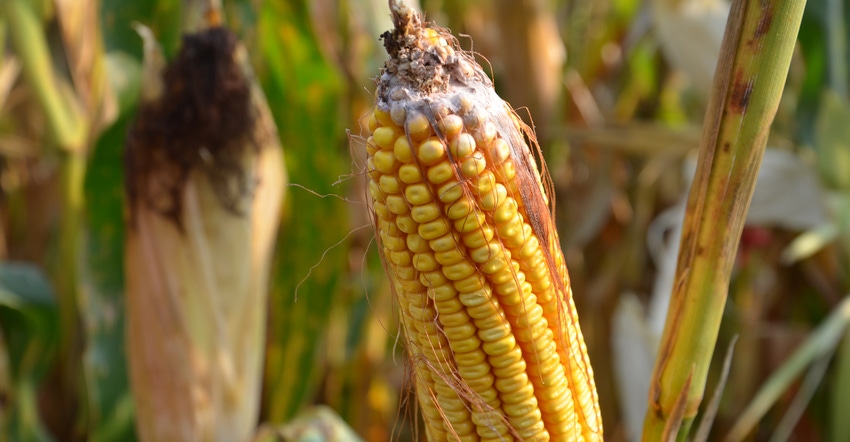September 25, 2018

We had a great start for the corn crop, with excellent stand establishment in most areas this spring. Potentially, we have a record corn crop. Timely rains were conducive for good pollination and grain fill periods.
Higher temperatures during the last two weeks of August helped almost the entire crop reach black layer. Rains received during the same period made certain that kernel depth and test weight improvement further added to the already high potential yields.
However, conditions conducive for crop growth were also favorable for the development of fungal leaf diseases such as gray leaf spot and northern corn leaf blight, which were rampant in some areas of the Corn Belt.
Cooler and humid weather favored the spread of northern corn leaf blight, whereas hot and humid weather helped gray leaf spot tighten its grip on plants. I didn’t see much anthracnose leaf blight this year. However, roots and stalks of plants weakened by other leaf diseases can also be affected by this fungus, since its spores can live in the soil for a long time, especially in corn after corn and no-till situations.
The anthracnose pathogen has plagued cornfields for many years and has been one of the biggest cornstalk killers for the past few years. It infects plants by spores splashing from the soil to the lower internodes of stalks. Anthracnose makes shiny black spots on stalks that look like shoe polish by harvest. Stalks become black inside and can rot and go down.
More diseases
Conditions this year were conducive to development of diplodia and gibberella ear and stalk rot diseases. Like anthracnose, spores of these fungi can survive in the soil for many years.
Diplodia fungal growth has a whitish color. This disease also affects ears, usually starting at the base and possibly spreading to the whole ear. Infected kernels are light in test weight but are not known to produce any toxins. Light ear weight contributes to reduced yield.
Gibberella ear rot is produced by a pink fungus that generally starts at the tips of ears. It can produce a mycotoxin knows as fumonisin. The grain should be tested before feeding to livestock.
Both diplodia and gibberella can cause a lot of yield loss if corn isn’t harvested on time. They can also affect silage quality. This is another reason why it’s important to select resistant hybrids and use fungicides when necessary.
Crop scouting should start at emergence and shouldn’t end until the crop is in the bins. As the crop starts to mature, you need to scout for ear and stalk rots by pulling back husks, pushing or pinching stalks, and planning which fields should be harvested first to reduce field losses, minimizing yield losses. Mother Nature has been kind to us during this growing season, but she also was kind to certain corn diseases.
For most of the Corn Belt, this has been an almost perfect corn growing season.
Nanda is president of Agronomic Crops Consultants LLC. Email [email protected] or call 317-910-9876.
About the Author(s)
You May Also Like






